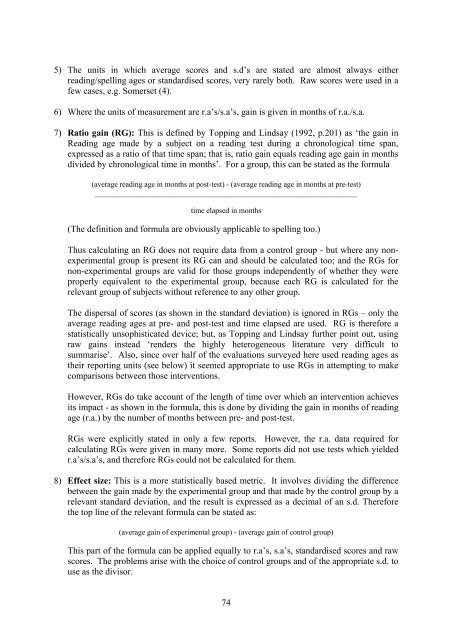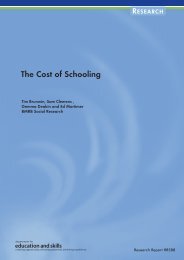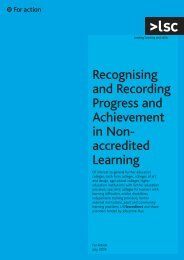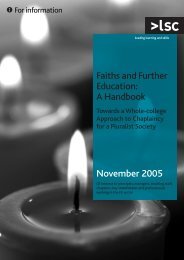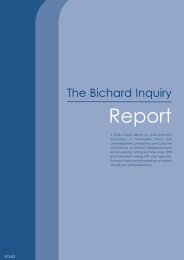What Works for Children with Literacy Difficulties? - Digital ...
What Works for Children with Literacy Difficulties? - Digital ...
What Works for Children with Literacy Difficulties? - Digital ...
Create successful ePaper yourself
Turn your PDF publications into a flip-book with our unique Google optimized e-Paper software.
5) The units in which average scores and s.d’s are stated are almost always either<br />
reading/spelling ages or standardised scores, very rarely both. Raw scores were used in a<br />
few cases, e.g. Somerset (4).<br />
6) Where the units of measurement are r.a’s/s.a’s, gain is given in months of r.a./s.a.<br />
7) Ratio gain (RG): This is defined by Topping and Lindsay (1992, p.201) as ‘the gain in<br />
Reading age made by a subject on a reading test during a chronological time span,<br />
expressed as a ratio of that time span; that is, ratio gain equals reading age gain in months<br />
divided by chronological time in months’. For a group, this can be stated as the <strong>for</strong>mula<br />
(average reading age in months at post-test) - (average reading age in months at pre-test)<br />
_____________________________________________________________________<br />
time elapsed in months<br />
(The definition and <strong>for</strong>mula are obviously applicable to spelling too.)<br />
Thus calculating an RG does not require data from a control group - but where any nonexperimental<br />
group is present its RG can and should be calculated too; and the RGs <strong>for</strong><br />
non-experimental groups are valid <strong>for</strong> those groups independently of whether they were<br />
properly equivalent to the experimental group, because each RG is calculated <strong>for</strong> the<br />
relevant group of subjects <strong>with</strong>out reference to any other group.<br />
The dispersal of scores (as shown in the standard deviation) is ignored in RGs – only the<br />
average reading ages at pre- and post-test and time elapsed are used. RG is there<strong>for</strong>e a<br />
statistically unsophisticated device; but, as Topping and Lindsay further point out, using<br />
raw gains instead ‘renders the highly heterogeneous literature very difficult to<br />
summarise’. Also, since over half of the evaluations surveyed here used reading ages as<br />
their reporting units (see below) it seemed appropriate to use RGs in attempting to make<br />
comparisons between those interventions.<br />
However, RGs do take account of the length of time over which an intervention achieves<br />
its impact - as shown in the <strong>for</strong>mula, this is done by dividing the gain in months of reading<br />
age (r.a.) by the number of months between pre- and post-test.<br />
RGs were explicitly stated in only a few reports. However, the r.a. data required <strong>for</strong><br />
calculating RGs were given in many more. Some reports did not use tests which yielded<br />
r.a’s/s.a’s, and there<strong>for</strong>e RGs could not be calculated <strong>for</strong> them.<br />
8) Effect size: This is a more statistically based metric. It involves dividing the difference<br />
between the gain made by the experimental group and that made by the control group by a<br />
relevant standard deviation, and the result is expressed as a decimal of an s.d. There<strong>for</strong>e<br />
the top line of the relevant <strong>for</strong>mula can be stated as:<br />
(average gain of experimental group) - (average gain of control group)<br />
This part of the <strong>for</strong>mula can be applied equally to r.a’s, s.a’s, standardised scores and raw<br />
scores. The problems arise <strong>with</strong> the choice of control groups and of the appropriate s.d. to<br />
use as the divisor.<br />
74


